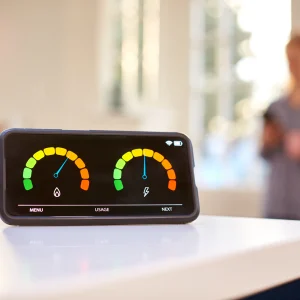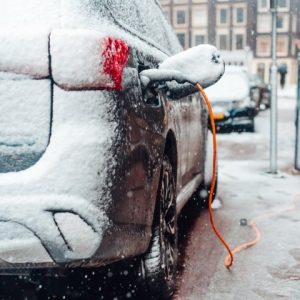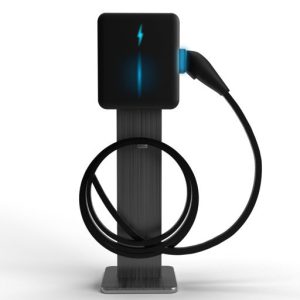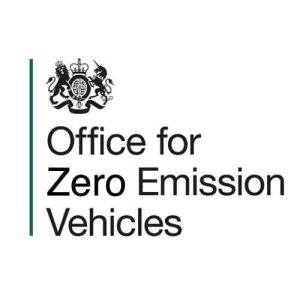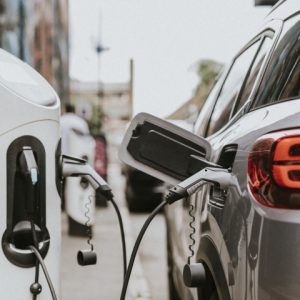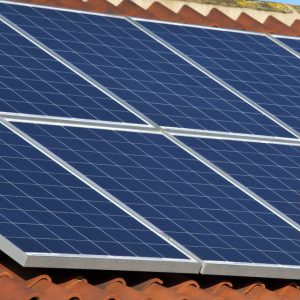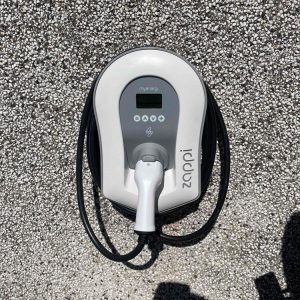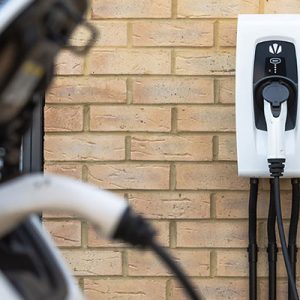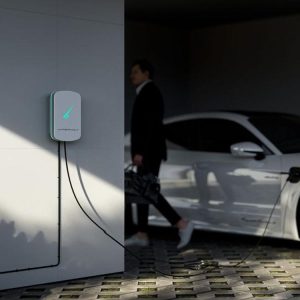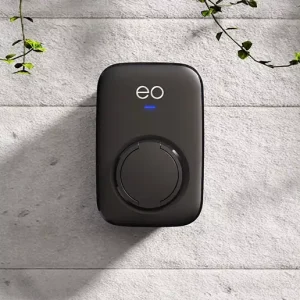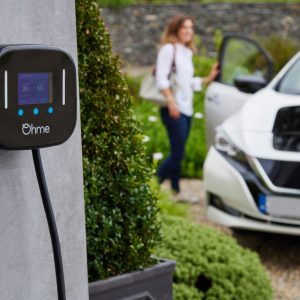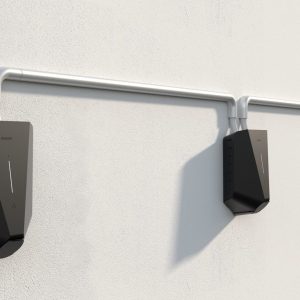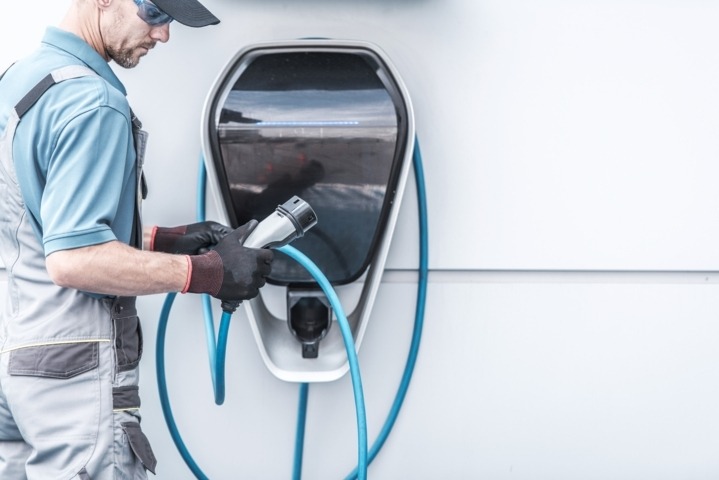
EV Charging Guide
Last Updated – March 23, 2023
One of the most revolutionary aspects of electric cars is their convenience. They’re cheaper to run, have longer mileage per tank than petrol vehicles, and are enjoying more and more charging points popping up every day.
However, EVs only start being truly convenient if they’re able to be charged on electric car chargers at home.
There are many home chargers currently available, but the quality of each and the features they offer differ immensely.
Let’s explore some popular brands, charger features, and the pros & cons of having electric car chargers at home!
ELECTRIC CAR CHARGERS FOR HOME - EV CHARGERS
POPULAR CHARGING BRANDS IN THE UK
A growing industry, the EV charger game is already stacked with competitors. Take a look below for a detailed list of the most popular brands in the UK.
Pod Point
Famed for thier large network for nationwide public chargers, pod point are one of the best known names in EV charging in the UK. Thier main home charger the pod point solo but they also have a range of commercial charging options
Myenergie
myenergie spcialise in proving a home charger which is designed for renewable energy. One of the most popular home chargers of 2021 & 2022, the Zappi Charger has proven to be a hit in the UK charging market.
Alongside the Zappi, myenergie also have an innovative range of solar and renewable energy products. From thier Libbi, a modular battery system for storing solar generated energy, to the eddi, a power diverter, myenergie are at the forefront of the rapidly in demand and developing solar PV market.
EO Charging
EO have recently released the EO mini Pro 3 as the follow up for the EO mini pro 2. These charging points specialise in being the smallest on the market and very stylish coming in a range of colours.
Easee
Easee are the first of the Norweigen companies to make the move into the UK market. This is significant because the Norweigen EV market is a lot more developed than the UK market. They already hit the 50% mark for cars sold being EVs in 2020 so most of europe will be keeping a close eye on thier results when rolling our thier own EV infrastructure.
The Easee one charger has already been very popular in the UK, offering a great design at a reasonable price.
WHAT IS SMART CHARGING?
Smart charging is how an electric vehicle user can charge their car via a smartphone app over a data or WiFi connection.
It enables total remote control of electric vehicle charging– you can even schedule charges or integrate tariffs via the app!
TOP CHARGER FEATURES
Below are all the features of electric chargers for the home that you should consider before making a purchase.
The specs of chargers available vary widely across the board, as the EV industry is growing quickly. Some of these features will be particularly important for individual users where your needs are vary. The amount of EVs you are charging, Power sources available & space on the wall can all be factors.
POWER OUTPUT
Consider the power needs of your household – are there multiple EVs? How much energy do you expect to use?
Most home chargers have a charging strength of at least 7kW, which is enough to charge an electric vehicle overnight. But if you are all about speed then picking a 7.4kW charger for that extra boost might be for you.
Faster charging and power-intensive options are available, with certain chargers listed above charging up to 22kW. However, to make use of 22kW you will need a three-phase power supply. These are generally in commercial buildings where the power required is much greater than at home. Most residential properties will be single phase. This means they will have a maximum output of 7.4kW which is why you will see a lot of chargers limited to this.
You car may also limit the power it can recieve, which can be below 7.4kw, so check you car manufacturer before purchasing a more powerful charger than you may be able to use.
PRICE
Again, there is immense market variation due to the fact that the EV home charging industry is almost brand new.
Nowhere is this more obvious than the prices of some of the home EV chargers currently available.
We class a charger including standard installtion for under £1000 as some of the cheaper on the market. The cheapest tend to be around £750 and the higher end chargers on the market can go up to £1500.
We recommend comparing EV chargers first and then you can match the features you need to your budget.
Be careful when looking around at prices, a lot of installers give the price inclding the £350 OZEV grant already discounted. While this can be applied you need to meet criteria which have become more restrictive as of April 2022.
As this is not available for all users, we show prices which DO NOT include any grant discount.
You will also likely see the prices are ‘from’ prices. This is because not every installation is the same and extra works may increase the cost. But we will come onto that later.
Over time, as the technology becomes more and more common, the prices may come down or more features offered.
SOCKET TYPE - TETHERED VS UNTETHERED
You should pay close attention to the socket type when purchasing electric car chargers for your home. The type of cable you need will depend on your car. Most newer electric cars in the UK use a Type 2 socket. Type 1 is more standard in the US.
Once you know the type of cable you need, you can choose between a tethered unit or untethered unit.
Tethered units have the cable attached and built into the unit. You will not be able to remove this and store it elsewhere, or use a different cable. These usually wrap around the charging unit or clip to the wall. Some chargers store the cable better than others so check the reviews of the unit and some installed photos before purchase.
Untethered units have a free socket for you to plug your cable into. This can have the advantage of being able to use your own cable and keeping the wall neat by storing the cable in the car or your home. However, you will always need to keep the cable on you which some users don’t like.
SIZE/DESIGN
The size and design of your EV charger is important.
You want your charger to blend seamlessly with the style of your home, and also make sure that it will fit where you’re wanting it to go!
The design of EV chargers is fairly simple – they’re almost all boxes of some sort.
Some offer colour choices, but most come in either black or white with options for further customization.
Size-wise, some are as small as a shoebox, while some are much larger– have another look at the list of popular brands above for the full specifications and physical dimensions.
LOAD BALANCING
Most electric car chargers for the home are capable of load balancing. But what is that, exactly?
Dynamic load balancing is the process where the EV charger monitors your home’s ingoing and outgoing power.
Any surplus in this power will then be directed to your car, with the charger automatically allocating it!
For example: In the case of running a washing machine and clothes dryer at the same time as a car is charging, dynamic load balancing will most likely let the dryer do its thing before continuing to charge the car at a high rate.
This feature eliminates the need for worrying over which appliance is using how much power. All you need to do is pick a charging schedule in line with your optimum EV tariffs and rates, and let the charger do the rest.
SOLAR COMPATIBILITY
As the world moves toward renewable energy, the solar compatibility of your appliances becomes more and more relevant.
EV chargers, as forward thinking pieces of technology, aim to harness solar power just as easily as they do grid.
Some available chargers, such as the Zappi Charger, are already fully optimised to run on solar and/or wind power, in addition to power drawn from the grid.
Before you buy, make sure to consider how future-proof you want your home electric car charger to be!
CHARGE SCHEDULING?
As demand for grid-power increases, many EV charging companies offer charge scheduling on their apps.
This enables users to schedule their EV charging for off-peak hours, so that cheaper electricity rates can be taken advantage of.
It’s a straightforward process: Find out the off-peak hours of your electricity company (if the charger hasn’t done that already) and use the app to schedule a charge for those hours. You’ll be saving money, as simply as that!
While all the chargers we feature have some kind of charge scheduling/smart charging feature, it can be worth checking reviews of the individual apps as some are easier to use than others.
EARTHING - DOES THE CHARGER NEED AN ADDITIONAL EARTH ROD?
Most EV chargers nowadays have eliminated the need for installing separate earthing rods. They do this via PEN technology- but what is PEN?
A Protected Earth Neutral (PEN) provides the neutral and protective earthing conductors while being just a single conductor itself.
While this may seem like a foreign language to you, just note the main point: EV chargers are advancing, with fewer and fewer requiring an external earthing setup.
TARIFF INTEGRATION
Along with charge scheduling, tariff integration is a key feature to consider when purchasing electric vehicle chargers.
Due to the increased demand for grid power courtesy of an increasing number of at-home EV chargers, charging companies are offering a range of tariffs to incentivise charging.
If you’re looking to save as much as you can by taking advantage of EV tariffs, make sure the home charger you select has an app with built-in tariff integration.
We recommend this as a core consideration given the energy price rises we have seen recently. While there are a lack of tariffs on the market at the moment due to the uncertainty it will be a matter of time until these tariffs become competetive again.
You can compare EV Tariffs with here.
TARIFF INTEGRATION
Installations will vary greatly for each property. No installation is the same, but we find that 85-90 of installations fall within most installers ‘Standard installation’ criteria.
How Long Does Installation Take?
Installation should take no more than a couple of hours, though the timeframe is location dependent as residential units built at various points in time may have differences of structure and wiring. If works to dig up ground or longer cable is needed then this can add siginifcant time onto the install.
As a rule of thumb, allow for at least a couple of hours, or talk directly with your charger installers for a more accurate timeframe when booking your install.
SAVING MONEY WITH EV CHARGING
We all know that electric vehicles are supposed to save their users money by not needing petrol.
However, even within the realm of electrical power usage, it’s possible to save even more money with EV charging!
Let’s take a look at how a conscious consumer can save even more of their hard-earned cash than they are already simply by using EV chargers.
WHAT ARE EV TARIFFS?
EV tariffs are energy initiatives that encourage owners of electric vehicles to charge their cars at certain times to receive rewards and benefits.
This is usually in the form of credit at the power company, or otherwise drastically lowered charging costs.
It’s easy to take advantage of EV tariffs, as most chargers have companion apps with built-in tariff integration.
Find the latest EV Tariffs and our EV tariff guide here
SOLAR PANELS & EV CHARGING
Some (but not all) home electric car chargers are solar panel-compatible.
EV charging is a forward-thinking approach to power, and those who want to continue down the road of future-proofing their energy sources would be smart to choose a charger which already integrates with solar.
This will future proof you should you decide to install solar panels at a later date.
OZEV GRANT
As we mentioned earlier the Office for Zero Emissions Vehicles (OZEV) offered a grant for those who are eligible as an incentive to use electric vehicles instead of the classic petrol-powered cars and trucks.
The criteria for this have now changed and it is only available for a limited number of circumstances. These include:
- Landlords
- Tenants in rental properties
- Flat owners
With the driver towards net-zero and other green initiatives this may change with new government policy. So its worth checking what grants, if any, are available to you prior to booking your installation.
How Much Does It Cost To Charge An Electric Car?
With the rapidly changing cost of electricity in the UK it is hard to give an exact figure. However, you can calculate the cost for your car with the following calculation.
Car Battery size (kW) x Electricity Cost (Kwh)
For more information on this we have created a ‘How Much Does it Cost to Charge an Electric Car? guide;’
Table of Contents
EV guides

